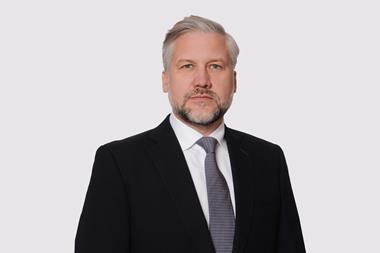Disraeli famously said that there are lies, damn lies, and statistics. Had he ever had to draw up the Top 50 brokers and intermediaries in the UK, he would have used stronger language. It has been a mammoth task. Thanks must go to A.M. Best International for the sterling efforts of its research team.
How do you decide a Top 50, or, for that matter, a Top Ten? Do you look at commission income alone? What about fees for other services? Do you look at profitability? Do you look at overall figures, including investment income? Do you look at the number of policyholders, the number of staff or the average value of a policy?
Disraeli famously said that there are lies, damn lies, and statistics. Had he ever had to draw up the Top 50 brokers and intermediaries in the UK, he would have used stronger language. It has been a mammoth task. Thanks must go to A.M. Best International for the sterling efforts of its research team.
How do you decide a Top 50, or, for that matter, a Top Ten? Do you look at commission income alone? What about fees for other services? Do you look at profitability? Do you look at overall figures, including investment income? Do you look at the number of policyholders, the number of staff or the average value of a policy?
Am I too heavy for my height or just too short for my weight? Which came first, the chicken or the egg?
The importance of this A.M. Best International listing, exclusive to Insurance Times, is that the industry will see the pace and direction of change.
They have compiled their figures by brokerage disclosed, which is brokerage and fees derived from insurance and reinsurance activities. Some figures may even include foreign activities.
As a result of recent mergers some companies, such as Lambert Fenchurch Group and Heath Group as well as Sedgwick and Marsh, have separate financial data. In response to this, Insurance Times has attempted to compile a current top 10 list, using UK fee and commission incomes for 1999 (see page 50).
The Top 50 listing is likely to change as brokers merge or get eaten. The biggest are probably untouchable but there is likely to be further consolidation in the middle and bottom end of the market. Who knows - perhaps next year the Top 50 will include many smaller new names as the middle market consolidates?
But the role of the intermediary will change too. How many firms now concentrate on a range of risk services rather than just broking insurance?
These are not just empty questions. The brokers that will survive - and, more importantly, those that will grow - will be those that add real value to the insurance buying process. Those that can provide the insurers with the best picture of the risk being placed will benefit from more accurate underwriting and more favourable prices.
Lower premiums will be an added value to the client too. The skilled intermediary will pile further savings on top of that through sound risk management advice. However, by making the client aware of further products and covers that will protect from risks they had not already considered, they will be on a winning streak.
All intermediaries, large or small, need to look at these issues, learn from the successful companies and innovate for themselves. The Top 50 is more than just showing off for the companies included; it should be an inspiration to every firm.
To be successful, even the smallest firm has to think big.
Chris Wheal
Editor, Insurance Times
Hosted by comedian and actor Tom Allen, 34 Gold, 23 Silver and 22 Bronze awards were handed out across an amazing 34 categories recognising brilliance and innovation right across the breadth of UK general insurance.













































